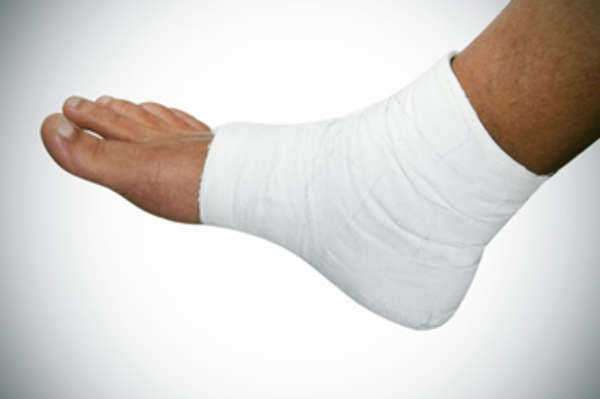
Medical Billing: Everything You Need To Know
Medical billing is an essential component of healthcare administration that deals with handling claim submissions, payment follow-up, and revenue management for healthcare providers. It’s a complex process that involves a range of tasks, including verifying patient information, submitting claims, coding diagnoses and treatments, and tracking payments. In this article, we’ll explore everything you need to know about medical billing, from its basics to the latest trends and technologies in the field.
Basics of Medical Billing
Medical billing is the process of submitting claims to insurance companies or governmental programs to receive payment for healthcare services rendered to patients. Healthcare providers, such as hospitals, clinics, and physicians, submit these claims as codes that identify diagnoses, symptoms, and treatments. Medical billing is a critical function in healthcare administration that ensures healthcare providers get paid for the services they provide.
Medical billing is a complicated process that involves several steps. Here’s a breakdown of these steps:
Step 1: Patient Registration and Verification
The first step in medical billing process is to collect patient information, including their name, date of birth, address, insurance information, and medical history. This information is used to verify patient eligibility for insurance coverage and ensure that all services provided are covered by the patient’s insurance policy.
Step 2: Coding and Charge Capture
Once patient information is verified, the medical biller assigns the appropriate medical codes to the services provided during the patient’s visit. This includes coding for diagnoses, procedures, and medications. Once the codes are assigned, the medical biller generates a claim that includes all the services provided, the codes assigned, and the associated charges.
Step 3: Claim Submission
After generating the claim, the medical biller submits it to the insurance provider through an electronic claims clearinghouse. The clearinghouse verifies the claim, checks for errors or missing information, and submits it to the insurance company for processing.
Step 4: Payment Follow-Up
Once the claim is submitted, the medical biller tracks its status and follows up with the insurance company to ensure timely payment. If a claim is denied, the medical biller follows up with the insurance company to determine the reason for the denial and resubmits the claim if necessary.
Step 5: Payment Posting and Reconciliation
After receiving payment, the medical biller posts the payment to the patient’s account in the billing system. The medical biller also reconciles the payment with the healthcare provider’s accounts receivable to ensure that all payments are accounted for and correctly recorded.
Latest Trends in Medical Billing
Medical billing has undergone significant changes in the past few years due to advancements in technology, increased regulatory scrutiny, and changes in healthcare policy. Here are some of the latest trends in medical billing:
1. Electronic Health Records (EHRs)
Electronic health records (EHRs) have become an essential tool in medical billing and healthcare administration. EHRs allow healthcare providers to collect, store, and share patient data electronically, making it easier to manage patient records, billing, and claims submission. EHRs also improve patient care by providing real-time access to patient information, enabling better diagnosis and treatment decisions.
2. Telemedicine
Telemedicine has become increasingly popular in recent years, especially during the COVID-19 pandemic. Telemedicine involves providing medical services remotely using video conferencing, messaging, and other digital technologies. Telemedicine can improve patient access to healthcare services, reduce costs, and increase convenience for both patients and providers. Telemedicine also presents new challenges for medical billing, as new codes and guidelines must be created to account for these services.
3. Outsourcing and Automation
Medical billing has become an increasingly complex and time-consuming process due to changes in healthcare policy and the introduction of new technologies. More healthcare providers are outsourcing their medical billing functions to third-party vendors who can provide specialized expertise and automation to streamline the billing process. Outsourcing can also help healthcare providers reduce costs and improve revenue cycle management.
4. Compliance and Security
Regulatory compliance and data security have become top priorities in medical billing due to increased scrutiny and the risk of fraud and data breaches. Providers must ensure that all billing practices, coding, and documentation comply with federal and state regulations. Data security measures must be in place to protect patient information and prevent cyber attacks.
Medical Billing Certification
There are several medical billing and coding certifications available, which can help individuals demonstrate their expertise and improve their job prospects. The most widely recognized certifications in medical billing include:
1. Certified Professional Coder (CPC)
The CPC certification is offered by the American Academy of Professional Coders (AAPC) and is recognized as a standard for medical billing and coding. The certification demonstrates proficiency in medical coding using the Current Procedural Terminology (CPT) and International Classification of Diseases (ICD) code sets.
2. Certified Medical Reimbursement Specialist (CMRS)
The CMRS certification is offered by the American Medical Billing Association (AMBA) and is designed for medical billing specialists. The certification covers a range of topics, including HIPAA compliance, billing and collection practices, legal and ethical issues, and coding.
3. Registered Health Information Administrator (RHIA)
The RHIA certification is offered by the American Health Information Management Association (AHIMA) and is designed for healthcare professionals who specialize in managing patient health information and medical records. The certification covers topics such as health information management, data analysis, privacy, security, and compliance.
Conclusion
Medical billing is a critical function in healthcare administration that ensures healthcare providers get paid for the services they provide. It involves several complex steps, including patient registration, coding and charge capture, claim submission, payment follow-up, and payment posting and reconciliation. The latest trends in medical billing include electronic health records, telemedicine, outsourcing, automation, and compliance and security. Medical billing certifications can help individuals demonstrate their expertise and improve their job prospects. By understanding the basics of medical billing and staying up-to-date with the latest trends and technologies, healthcare providers can improve their revenue cycle management, reduce costs, and provide better care to their patients.
What is Medical Billing?
Medical billing is the practice of submitting medical claims to health insurance companies or the U.S. government in order to receive payment for health, medical, or preventative care services as well as supplies that were given by a doctor or a licensed health care professional.
Medical billers can work in physician’s offices, hospitals, insurance companies, outpatient care centers, and nursing homes.
An individual working in medical billing, or a medical biller works to bill for health or medical care services, equipment, consultations, medications, and supplies. This is done by sending claims to an insurance company, posting payments, following up on claims, responding to requests about a claim, or discussing a denied, pending, or reviewed claim with a patient. The work is done systematically to bill and collect fees for care given to a patient.
Medical billing is a part of the business aspect of the health care industry. The work between medical billers and physicians, lawyers, managers, or medical coders does not have much overlap. Instead, they are responsible for much of the administrative and billing work from a health care provider.
Some of the work involved in medical billing includes:
• Handling co-payments
• Collecting and managing accounts receivable
• Managing claims denial appeals
• Organizing medical bills and statements
• Negotiating with various collection agencies
• Speaking to insurance companies on behalf of a client
• Understanding an office’s billing routine and a patients insurance company policies
Most standard medical billing services provide
• Claim Submissions: Submitting claims that include patient information, encounter information, and insurance information that then get stored in a database.
• Following up on claims: Medical billers follow up on claims until they are completely paid, this allows more claims to get approved in a shorter time.
• Patient billing and answering inquiries: Medical billers are responsible for handing the logistics of billing while handling any patient questions
• Extended billing services: While these services may not be involved to invoicing, they can include
o Medical transcription
o Practice management services
o Credentialing insurance companies
o Diagnosis and procedural coding
o HR management services
In order to start working in the medical billing field, the medical biller must have adequate training in Medicaid billing and coding, medical bookkeeping, basic insurance, medical law, and procedural terms. Along with this, a medical biller needs to be familiar to the various plans provided insurance companies.
Furthermore, anyone working in medical billing must also have basic office knowledge, know how to use a computer, understand medical practice management software, and be able to provide good customer service.


























